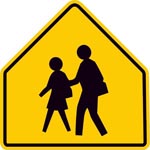Children, Youth, Families & Schools, Nebraska Center for Research on
ORCID IDs
Date of this Version
2012
Citation
Early Childhood Research Quarterly (2012) 27: 295-305. DOI:10.1016/j.ecresq.2011.09.006.
Abstract
The present study examined the efficacy of two different approaches to teaching designed to facilitate children’s learning about science concepts and vocabulary related to objects’ floating and sinking and scientific problem-solving skills: responsive teaching (RT) and the combination of responsive teaching and explicit instruction (RT + EI). Participants included 104 children (51 boys) aged four to five years.Small groups of children were randomly assigned to one of the two intervention groups (RT, RT + EI) or to a control group. Responsive teaching (RT) reflects a common approach to teaching young children, and the combination approach (RT + EI) includes explicit instruction as well as responsive teaching. The two planned interventions were implemented with preschool children and provided evidence that (1) young children learned science concepts and vocabulary better when either responsive teaching or the combination of responsive teaching and explict instruction was used; (2) children in the combined intervention group learned more science concepts and vocabulary and more content-specific scientific problem-solving skills than children in either the responsive teaching or control groups. Limitations, future directions, and implications for practice are also discussed.


Comments
Copyright 2012, Elsevier. Used by permission.